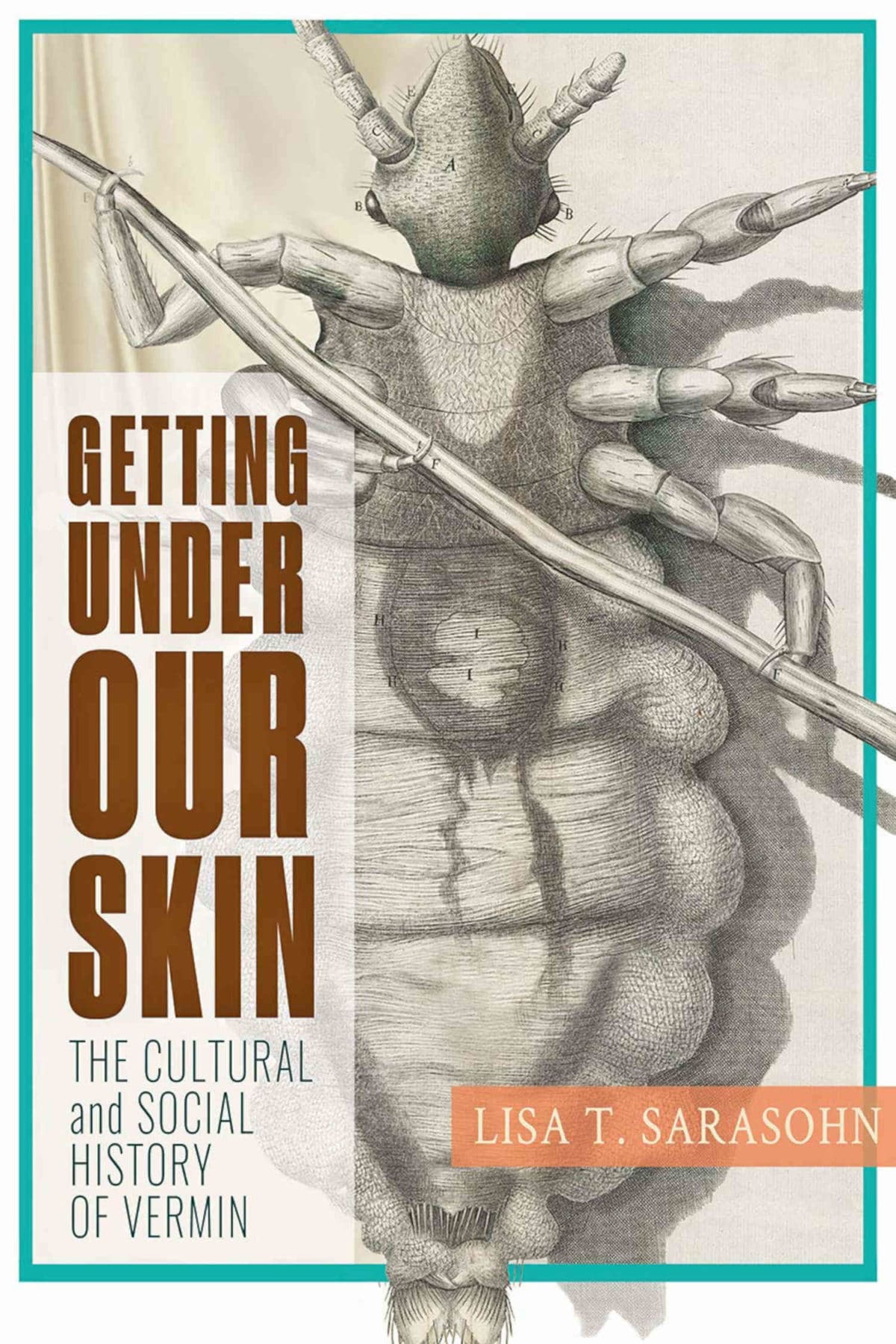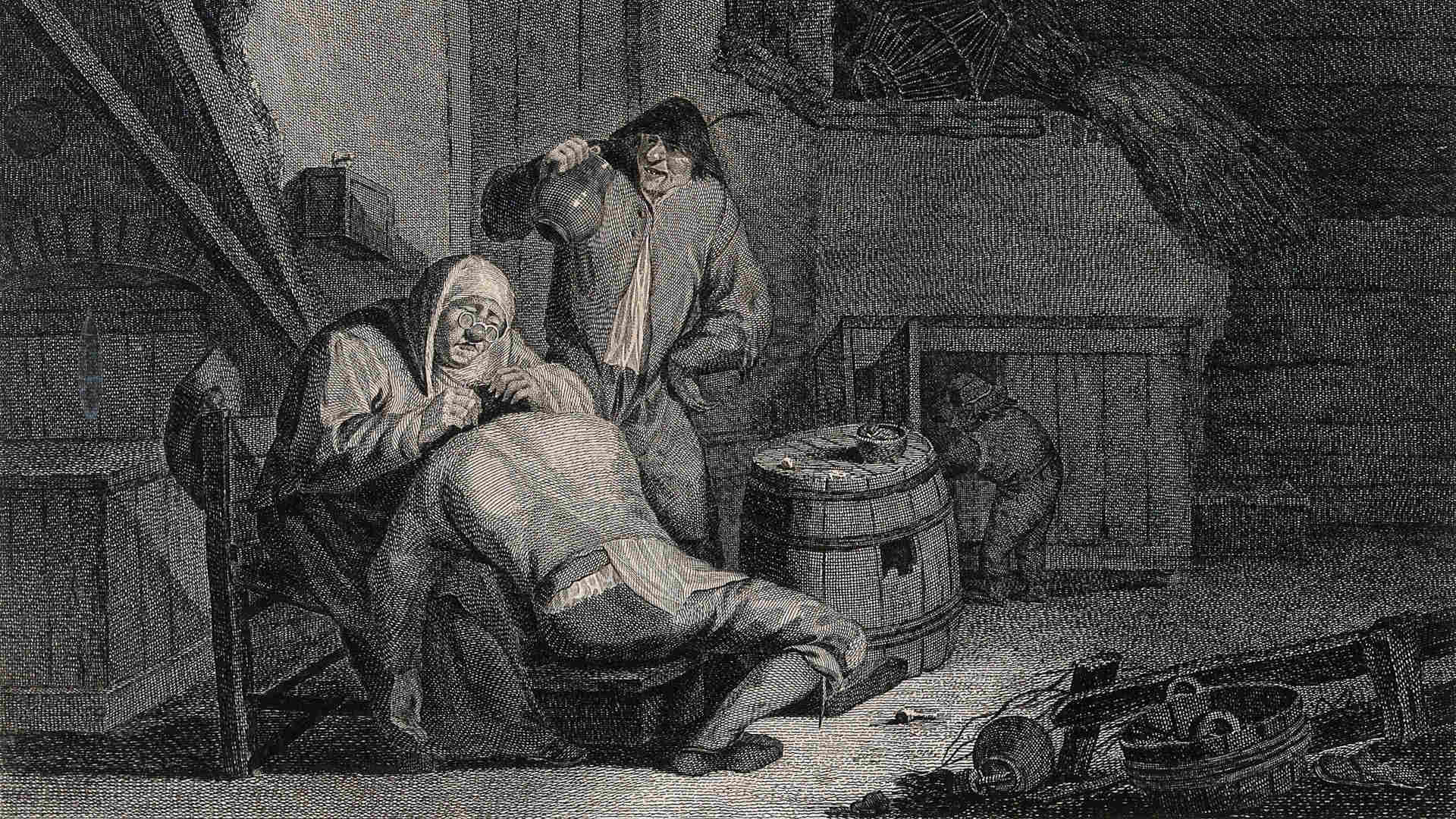Before the dawn of modernity, mutual de-lousing was a common social activity. The late- medieval denizens of Europe would sit around picking lice off of one another, and according to Lisa T. Sarasohn in her latest book, “Getting Under Our Skin: The Cultural and Social History of Vermin,” nobody seemed to mind. An illustration from a 16th-century health manual shows an upper-class woman using a brush to delouse a man — and “both seem pretty happy about it,” Sarasohn writes. This behavior was perfectly in step with cultural attitudes of this era; a century later, the famed diarist Samuel Pepys wrote an amused and delighted entry about waking up next to a friend who was covered in bed bug bites.

BOOK REVIEW — “Getting Under Our Skin: The Cultural and Social History of Vermin,” by Lisa T. Sarasohn (Johns Hopkins University Press, 296 pages).
But a few decades after Pepys’ writing, both jolly bed bug jokes and sanguine communal lice-picking were practices of the past. As the pre-modern era gave way to the modern era, Sarasohn writes vermin and pests that had previously been considered everyday nuisances took on fraught social, political, and cultural significance. Part history of public health and natural science and part sociological study, “Getting Under Our Skin” argues that once Europeans separated themselves from insects and rodents and coded these beings as existential threats, they truly ushered in the modern world — with all its attendant hygienic and medical advantages, and its racist and classist horrors.
Sarasohn, an emeritus professor at Oregon State University who specializes in the history of science and early modern intellectual history, is no stranger to writing about this era; she’s published two previous books about early modern British naturalist and metaphysical thinker Margaret Cavendish. Here she covers the history of four different animals and the role they played in modernizing the Anglophone world: bed bugs, lice, fleas, and rats.
In each section, she shows how shifting public health standards shaped discourse and attitudes around these creatures — and in turn shaped commerce and society. For example, in the decades leading up to the French Revolution, Sarasohn writes, the bourgeoisie started combating lice by shaving their heads, turning wig-making into a brisk business. (Other historians suggest their popularity was also sparked by a desire to hide hair loss from diseases like syphilis.) Meanwhile, entrepreneurial exterminators in London collected bed bug specimens, published pamphlets featuring illustrations of these creatures, and hawked their trade to the itchy and desperate. Ratcatchers prowled the English countryside, shadowy figures who lived on the outskirts of society. And naturalists and scientists used newly invented microscopes to scrutinize these tiny beings and place them in the schema of their developing knowledge about the world.
Not only did the creatures intersect with human health, business, and science but they came to shape social and political commentary. Sometimes satirists evoked them in covert critiques of the ruling class; for example, rats featured prominently in criticisms of the Hanoverian dynasty, which took power in England in the early 18th century. In other cases, early modern Englishmen used vermin to talk about sex: Researcher Robert Hooke, encountering lice under a microscope referred to them as “saucy” creatures, likely due to an already established association between lice and prostitution. Meanwhile, a popular contemporary entertainment was misogynistic “flea porn,” a written genre that was, well, exactly what it sounds like. (John Donne’s 17th-century poem “The Flea” was, according to Sarasohn, the most famous example.)
Sarasohn also confronts a darker aspect of our cultural relationship with vermin: the pervasive tendency to conflate these creatures with the other. This pattern was repeated over and over again throughout the early modern and industrial ages. The British thought that bed bugs had invaded London by embedding in foreign wood imported after the Great Fire of 1666. In the 18th and 19th centuries, commentators debated whether darker skin could even sustain bites from bed bugs and both anti- and pro-abolitionists in America linked slaves to fleas. And in the 19th and early 20th centuries, when the plague arrived in Hawaii and California, panicked residents refused to believe that the fleas were the bearers of the disease and instead burned down much of the Chinese section of Honolulu.
It’s a small leap from associating outsiders with vermin and disease to actually conflating foreigners with vermin and disease. Oliver Cromwell famously allegedly said “nits make lice” to justify his massacre of Irish troops in the 1640s. Most contemporary readers are aware that the Nazis called Jews lice and other vermin. In addition, the science surrounding vermin intersected with racist pseudoscience. Scientists in the 19th century used studies of rat behavior to promote so-called clean living and upright morality, ideas tinged with eugenicist thought. And other commentators of the era believed that lice evolved through polygenesis, a pseudoscientific theory that posited that species originated from many different stocks — and that, when extended to humans, implies that people of different races did too. That theory was often used to justify beliefs in racial inferiority. Of course, rhetoric that conflates outsiders or foreigners with disease, dirt, and vermin is still alive and well today.
Sarasohn’s chapters about bed bugs most clearly illustrate our pervasive, outsized propensity to panic about vermin. Unlike rats, fleas, and lice, which actually do spread deadly diseases like typhus and the plague, bed bugs don’t typically hurt you beyond delivering annoying, itchy bites. But the recent resurgence of bed bugs in American cities shows how bed bugs affect us psychologically. Sarasohn chronicles how many of those afflicted by bed bugs say their overwhelming feeling is one of shame; she describes accounts from the 21st century of discreet exterminators sneaking into the penthouses of the wealthy and fumigating their designer clothes surreptitiously to spare them social ostracization.
As Sarasohn writes, “human vulnerability makes us paranoid.” Overreaction also tinges modern responses to the other creatures in Sarasohn’s book: Although lice-borne diseases are easily curable now, and head lice do not transmit disease, lice outbreaks at elementary schools are often met by panic and shame and, tellingly, blamed on lower-income kids. Sarasohn quotes a column from The New York Times in which the writer states that the worst thing about bed bugs is “the way others react when you give them the news.” She also peruses a forum for bed bug sufferers, some of whom felt they had “PTSD that is bed-bug-related” and who went “days without sleeping.”
Humanity’s relationship with animals is a hot topic these days in books by authors ranging from Helen Macdonald to Simon Barnes. By focusing on the stories we tell about vermin, Sarasohn maintains that we can probe a spectrum of interconnected issues, including racism, classism, sexism, hygiene standards, and modernity. Although a few pieces of her evidence rely on tenuous or unsupportable leaps of logic, overall her book represents a worthy addition to this canon.
“Getting Under Our Skin” is a reminder that our perception of vermin, and our ever-burgeoning horror of them, has shaped our language, our attitude towards the poor, our prejudices toward out-groups, our obsession with hygiene, and our perspective on our environment and ourselves. It wasn’t always this way — according to Sarasohn, in medieval times, vermin were just a fact of life. But ever since, as she astutely writes, “vermin always signified something bigger than a bite.”
Emily Cataneo is a writer and journalist from New England whose work has appeared in Slate, NPR, the Baffler, and Atlas Obscura, among other publications.










